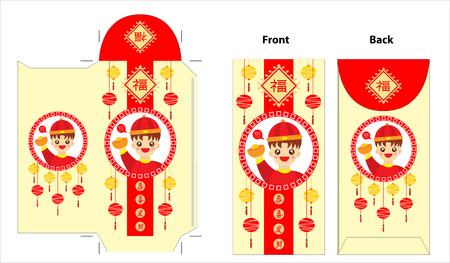1. The Role of Wall Art in Feng Shui Dining Rooms
Wall art is more than just decoration in a Feng Shui-inspired dining room—it plays a vital role in shaping the energy, mood, and overall experience for everyone at the table. According to Feng Shui principles, every item in your space—including what you hang on your walls—can influence the flow of chi (energy) and affect how comfortable and harmonious your dining area feels.
How Wall Art Influences Energy Flow
In Feng Shui, the goal is to create a balanced and inviting environment where positive energy can circulate freely. The artwork you choose should support this goal. For example, images depicting abundance, such as bowls of fruit or flourishing landscapes, are believed to attract prosperity and good fortune. On the other hand, wall art with harsh lines, chaotic scenes, or lonely subjects can disrupt the energy flow and make mealtimes less enjoyable.
Mood and Dining Experience
The right wall art sets the tone for your dining room. Warm colors and uplifting imagery encourage social interaction and appetite, while cooler tones can foster calmness and relaxation. Its all about creating a welcoming atmosphere that matches how you want family and friends to feel when they gather around your table.
Blending Feng Shui with American Home Aesthetics
It’s absolutely possible to honor both Feng Shui traditions and contemporary American style. Many popular themes—such as farmhouse prints, abstract landscapes, or family photos—can align with Feng Shui if chosen thoughtfully. The key is to focus on artwork that radiates positivity, warmth, and togetherness without clashing with your personal taste or décor style.
| Feng Shui Principle | Wall Art Suggestions | American Style Ideas |
|---|---|---|
| Promote Abundance | Bountiful fruits, harvest scenes | Farmhouse kitchen prints, rustic still lifes |
| Encourage Harmony | Pairs or groups of objects/people | Family portraits, group gatherings |
| Avoid Negative Imagery | No stormy weather or solitary figures | No gloomy abstract art or isolated subjects |
| Create Warmth & Welcoming Vibe | Warm colors, soft shapes | Cottagecore florals, inviting landscape photos |
By thoughtfully selecting wall art that reflects both positive energy and your unique style, you can transform your dining room into a space where good food and good company always come together harmoniously.
2. Top Wall Décor Choices to Enhance Dining Room Feng Shui
When choosing wall art and décor for your dining room, Feng Shui principles encourage you to select pieces that inspire a sense of harmony, abundance, and joy. The right artwork can create a welcoming atmosphere where family and friends feel comfortable gathering together. Below are some top choices that work well in American homes:
Landscape Paintings
Landscape paintings are classic Feng Shui favorites. They symbolize open opportunities and peaceful energy flowing into your home. Choose scenes with gentle hills, flowing water, or lush greenery—these images support calm conversations and positive vibes around the dining table. Avoid stormy or barren landscapes, as they may bring unsettled energy.
Fruit and Floral Imagery
Images of ripe fruit or blooming flowers are powerful symbols of abundance and prosperity in Feng Shui. They remind everyone of health, growth, and good fortune. Fruit bowls or floral prints look great above a buffet or on the main dining wall, especially when depicted in vibrant but soft colors.
| Type of Artwork | Feng Shui Benefit | American Style Examples |
|---|---|---|
| Landscape Paintings | Promotes peace and opportunity | Pastoral farms, mountain lakes, gentle forests |
| Fruit Imagery | Symbolizes abundance and health | Bowl of apples, bunches of grapes, citrus fruits |
| Floral Art | Brings vitality and joy | Sunflowers, peonies, wildflower bouquets |
| Abstract Art (Soft Colors) | Creates calm and harmony | Pale blue swirls, gentle watercolor patterns |
Abstract Art with Soft Colors
If you prefer a modern touch, abstract art with soothing color palettes is an excellent choice. Look for artwork featuring pastel shades or light earth tones—these colors help relax the mind and encourage enjoyable meals together. Avoid harsh lines or aggressive patterns that might disrupt the peaceful flow.
Tips for Displaying Feng Shui-Friendly Wall Art
- Hang at eye level: This makes the space feel more welcoming and balanced.
- Avoid overcrowding: Give each piece room to breathe so energy can circulate freely.
- Select positive themes: Images should spark joy or gratitude—not stress or conflict.
- Aim for symmetry: Balanced arrangements promote harmony among diners.
Avoid These Common Pitfalls
- Avoid dark or sad imagery—these can dampen the mood during meals.
- Avoid sharp objects or weapon motifs—they introduce negative energy.
- Avoid mirrors reflecting clutter—they can double chaotic energy in the space.
Selecting the right wall art not only beautifies your dining room but also supports a happier, more abundant life according to Feng Shui traditions—and these ideas fit perfectly with American tastes and lifestyles.

3. What to Avoid: Art and Décor That Disrupt Feng Shui
Choosing the right wall art and décor for your dining room is essential for good Feng Shui, but it’s just as important to know what to steer clear of. Certain images and decorative elements can actually block positive energy or attract negativity, making your dining space less inviting and harmonious. Below, youll find a simple guide to types of art and themes best avoided in a Feng Shui dining room.
Art Types and Themes to Avoid
| Type or Theme | Why to Avoid | American Examples |
|---|---|---|
| Aggressive Imagery | Art depicting violence, battles, or wild animals can create tension and disrupt harmony. | Abstract paintings with sharp, jagged lines; action-packed sports posters; hunting scenes. |
| Lonely Figures | Images showing single, isolated people or empty places can promote feelings of loneliness rather than togetherness. | Lone person at a table, solitary tree in a barren landscape. |
| Chaotic or Harsh Color Schemes | Bright reds, blacks, or clashing neon colors may cause stress instead of relaxation. | Graffiti-style art; bold color-block pieces with no balance. |
| Sad or Melancholic Themes | Art that feels gloomy or sorrowful can bring down the mood during meals. | Rainy cityscapes, weeping figures, desolate locations. |
| Overly Abstract or Confusing Images | If guests cant make sense of the artwork, it can create unease and mental clutter. | Complex geometric patterns without clear direction; overwhelming modern installations. |
| Sharp Objects or Weapon Decor | Displaying items like swords, knives, or arrows points toward aggression and danger in Feng Shui. | Wall-mounted vintage rifles, crossed sabers, decorative daggers. |
What About Family Photos?
While family photos are meaningful in American culture, avoid displaying images that recall sad memories or discord. Choose joyful group pictures over solo shots to foster unity at the dining table.
Quick Tips for Safe Choices
- Avoid anything that feels too dark, harsh, or unsettling when you look at it.
- If a piece reminds you of an argument or unhappy time, it’s better placed elsewhere—or not at all.
- Pops of color are great but balance them with softer tones for a welcoming atmosphere.
4. Incorporating Local Art and American Design Trends
Blending Feng Shui with American wall décor styles can create a dining room that feels both harmonious and stylish. Here’s how you can combine traditional Feng Shui principles with popular trends in the U.S. for a unique and inviting space.
Using Mixed Media for Balanced Energy
Mixed media art is trending in American homes and fits well within Feng Shui if chosen thoughtfully. For example, you might combine paintings, textiles, and metal sculptures to represent different elements—wood, earth, metal, fire, and water. Be sure the colors and shapes support a calming, joyful atmosphere. Avoid sharp objects or aggressive imagery, which can disrupt the flow of positive energy.
Feng Shui Elements & Suitable Mixed Media Ideas
| Element | Mixed Media Suggestions | Avoid |
|---|---|---|
| Wood | Framed botanical prints, wooden wall panels | Dead plants or images of decay |
| Metal | Metal sculptures with smooth edges, silver picture frames | Sharp metal tools or abstract chaos |
| Earth | Ceramic wall tiles, earthy textured canvases | Dull or muddy colors that feel heavy |
| Fire | Vibrant red or orange art, soft lighting fixtures | Aggressive flames or harsh lighting |
| Water | Pleasant water-themed photographs, blue glass accents | Stormy sea images or dark water scenes |
Statement Pieces: Make It Meaningful
A large statement piece is very popular in American dining rooms. In Feng Shui, choose artwork that depicts abundance, togetherness, or nature—such as a colorful landscape or a bountiful harvest scene. Stay away from art showing loneliness or conflict.
Tips for Choosing Statement Wall Art:
- Size: Pick a piece proportionate to your wall—too big overwhelms, too small gets lost.
- Theme: Go for uplifting images like blooming flowers, peaceful forests, or happy gatherings.
- Placement: Center it on a main wall where everyone can see it easily during meals.
- Avoid: Dark or sorrowful themes; abstract pieces that feel chaotic.
The Curated Gallery Wall: Harmonious Collections
The gallery wall is a beloved trend in the U.S., but it can also fit Feng Shui with mindful curation. Mix family photos (showing happy times), local artists’ works, and soothing nature scenes. Keep frames consistent in color and shape for unity.
Gallery Wall Dos and Don’ts for Feng Shui Dining Rooms:
| Do Showcase… | Avoid… |
|---|---|
| Lively group photos Art celebrating community Nature-inspired prints Local landscapes Art with gentle movement (birds, flowing rivers) |
Lone figures Violent scenes Dark or stormy weather Overly busy patterns Cluttered arrangements |
By thoughtfully incorporating local art and American design trends into your dining room décor while following basic Feng Shui guidelines, you can create an environment that feels welcoming and energetically balanced for everyone at the table.
5. Placement Matters: Feng Shui Tips for Arranging Wall Art
When it comes to creating good Feng Shui in your dining room, where you hang your wall art is just as important as what you choose to display. The right placement can help attract positive energy (also called “chi”), support harmony among family and guests, and make everyone feel welcome at the table. Here are some practical tips for arranging your wall décor the Feng Shui way:
Best Spots for Wall Art in the Dining Room
| Wall Location | Why It Works | Feng Shui Effect |
|---|---|---|
| Main Wall Facing the Entry | It’s the first thing people see; sets the mood instantly. | Invites abundance and positive vibes into the space. |
| Side Walls (Left or Right of Table) | Adds visual interest without overwhelming diners. | Balances energy flow and supports peaceful interactions. |
| Behind the Dining Table | Creates a strong backing for those seated, feels supportive. | Encourages feelings of security and togetherness. |
Height and Alignment Tips
- Eye-Level Display: Hang artwork so the center is about 57-60 inches from the floor—this is average eye level in American homes and helps everyone connect with the art naturally.
- Avoid Hanging Too High or Low: Art that’s too high can feel disconnected; too low may create a heavy or cramped atmosphere.
- Centered Over Furniture: Place art centered above buffets or sideboards, leaving 6-12 inches between the bottom of the frame and the top of furniture for a polished look.
Avoid These Common Placement Mistakes
- No Art Directly Facing Mirrors: In Feng Shui, mirrors double whatever they reflect. Avoid reflecting negative images or clutter with wall art opposite a mirror.
- Avoid Crowding: Don’t cluster too many pieces together; leave breathing room so each piece can shine and energy can flow easily.
- No Sharp Corners Pointing Toward Table: Skip artwork with sharp frames or angular designs facing toward where people sit—it can create tension instead of comfort.
Quick Reference: Dos & Donts for Wall Art Placement in Dining Rooms
| Do’s | Don’ts |
|---|---|
| Center art at eye level, especially behind seating areas. Use pairs or groups of three for balance. Let art complement natural light sources. |
Avoid harsh lighting on art. Don’t block windows with large décor pieces. Skip gloomy, aggressive, or chaotic images near dining spaces. |
With these simple placement guidelines, your dining room will not only look beautiful but also feel inviting and harmonious for every meal and gathering!


